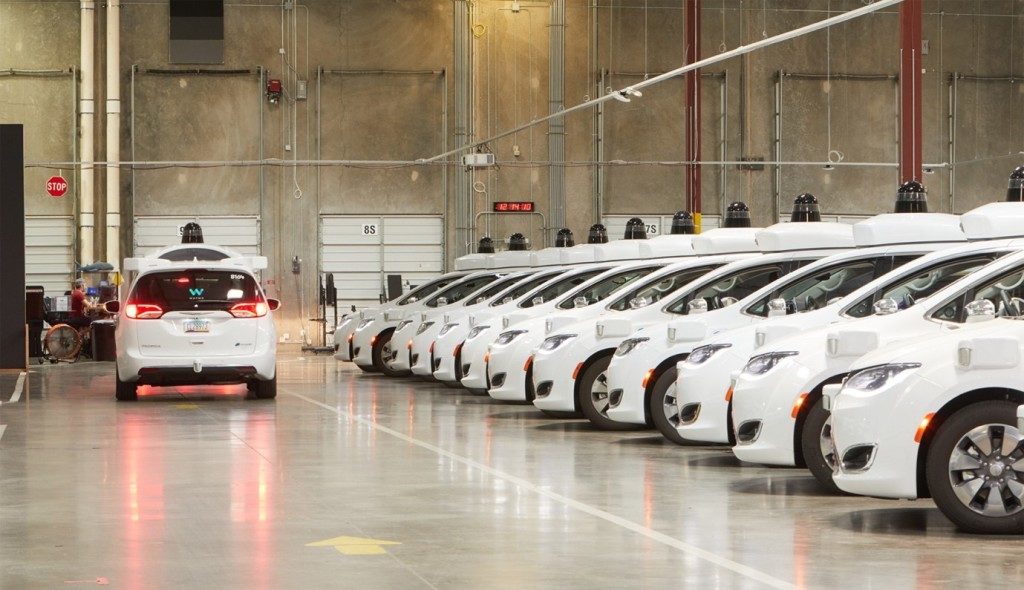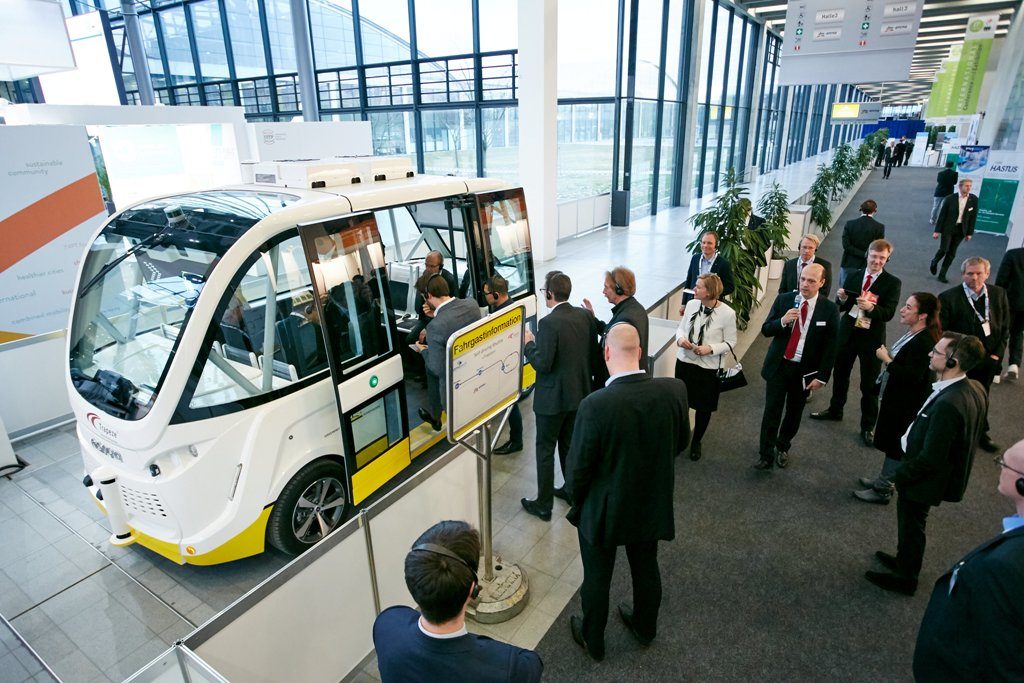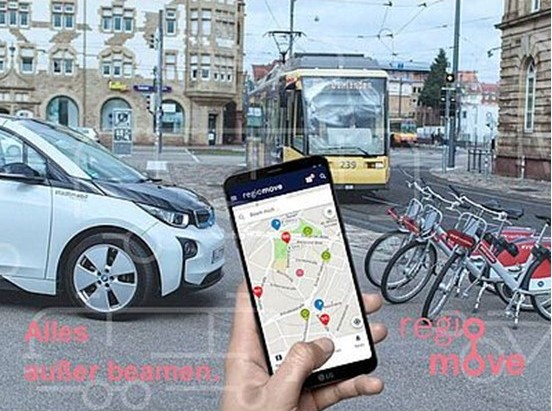
We are the number 1 car manufacturer. Can we become the number 1 in new mobility solutions? Winfried Hermann, Minister of Transport, State of Baden Württemberg raised this question during the opening session of the IT Trans Conference. And he added objectives for Baden Württemberg:
- • state-wide rollout of eTicketing
- • real time availability of information
- • Introduction of intermodal usage of different mobility services
- • Availability of on demand mobility services, in particular for rural areas
New mobility solutions require new trains, cars, buses and companies that offer new services. The Urban Transport Magazine keeps you up-to-date about new vehicles and service offers around the world. Less visible, but certainly not less important is state of the art technology to power the new mobility services. The IT Trans at the Karlsruhe Trade Fair Center brought providers of IT and mobility solutions from around the world together. From 1.-3. December the IT Trans hosted some 250 exhibitors from 28 countries and 1750 experts from all over the world participated in 30 session. The conference delegates participated online.
Due to COVID the IT Trans was changed to a virtual conference & exhibition. The impact of COVID on traffic patterns, user behavior, and faster adoption of new technologies like contactless ticketing was high on the agenda.
COVID has caused a sharp reduction in traffic volumes and revenues for all urban transport providers. We also witnessed a shift from public transport to individual transport modes, be it with a car or a roller. COVID also accelerated the rise of contactless payment & ticketing for public transport. The last 5 years have seen a slow but steady rise of contactless payment and ticketing. This trend was accelerated by COVID and moved from worldwide 30% in 2019 to more than 40% towards the end of 2020 as Ana Reiley, Head of Visa’s Global Urban Delivery Team pointed out.
New tariff models for infrequent travelers post COVID
More home-office work means less or less frequent commuting to the office. These infrequent travelers need to be attracted with new tariff models. The classic travel pass with a monthly subscription fee, which still accounts for the majority of tariff usage, is not an attractive pricing model for infrequent travelers. New dynamic pricing models were presented, where travelers can choose their zone and buy a certain number of rides. The price point of this fare is between the flatrate monthly subscription fee and the sum of individual ticket fees. Furthermore, the new COVID induced traffic volumes and flows may require to review the fleet, route and schedule management. This is where new technologies can help with tracking, data management and AI-based optimization.
- • Artificial Intelligence (AI) and Internet of Things (IoT)
- • Autonomous mobility
- • On-demand and shared mobility
- • Mobility-as-a-Service (MaaS)
- • Ticketing and payment
- • Data ownership and governance
- • Intelligent city traffic management
- • Digital transformation
were the other hot topics, which the delegates discussed in addition to public transport under Covid-19. “We are pleased that IT-TRANS is finally able to fulfill its function as a hub for innovations and to give the sector this platform during these incredibly challenging times for the public transport industry. The relevance of digitalisation in the urban mobility sector has become even clearer in recent months. Even though the personal meeting on site cannot be completely replaced by digital exchange we are using all possibilities to virtually network with our global audience on the digital IT-TRANS platform” said Britta Wirtz, Managing Director, Messe Karlsruhe.
Clusters are highly important for innovation emphasized Prof. Dr.-Ing. Eric Sax, Head of Information Processing Technologies at the Karlsruhe Institute of Technology (KIT). He added that the KIT, the University for Applied Sciences, startups and the Karlsruhe Public Transport Authority (KVV) form such a cluster. KVV managers give lectures at the KIT and students work as interns as the KVV. This ensures a close co-operation between science and praxis for urban mobility.
Autonomous mobility is at a flexing point
Prof. Dr.-Ing. Eric Sax also stated that the technology is now affordable for the massive real-time calculations that are required for AI. According to Gayang Ho, Leader of Research & Policy Development, UITP Asia-Pacific Centre of Transport Excellence, AI is the underlying technology for many new services from smart infrastructure, better customer service, optimized route, fleet and traffic management to predictive maintenance and autonomous mobility. Several speakers saw autonomous mobility at a flexing point now for a broad takeoff.

Christoph Bornschein, CEO & Co-Founder of TLGG Consulting warned that Google, Waymo et al will do to carmakers in the future, what Apple Pay is doing to banks today. And if autonomous vehicles would simply replace today’s cars, then the traffic volume would double and cause a total traffic collapse. On the other hand, there could be very positive outcomes, if autonomous mobility would be used to provide a public transport service. Traffic could be reduced 14-31% and more than 50% of journeys would require less than 2 minutes waiting time and would have to endure less than 4 minutes detour times. This is the outcome of a scenario that Ruter As was running for Oslo. Raphael Gindrat, CEO of Bestmile is convinced that a kind of control tower -similar to air traffic control- is necessary to operate a fleet to autonomous vehicles in an efficient way. Alejandro Badolato, CEO of Auto Drive Solutions pointed out that autonomous mobility is not only for cars, but offers great potential for buses, freight trains and trucks. Labor costs account for around half of the overall costs of operating freight trucks. Even the plan for the volocopter is to move ultimately towards autonomous flying as Ralf Frisch, Senior Business Development Manager, volocopter stated.

Can smaller cities benefit most from new technologies?
Discussions continued at the After Fairs each day after the conference program. At the After Fair, all participants of the IT-TRANS online community could start a discussion round on the topic of their choice or participate in existing ones. Industry colleagues with similar interests were suggested to each other via matchmaking. At one of the After Fairs the participants agreed that the public discussions center too much on bigger cities. While bigger cities bring the critical mass for the business models of new mobility services, technology may actually provide the most benefits for mobility services for suburbs, smaller cities and rural areas. For example, AI can optimize on-demand shuttle services for these areas to make them more efficient and affordable. This is one possibility to bring better connectivity to less densely populated areas. The most promising approach is a holistic mobility concept for a whole region encompassing cities and rural areas. This is the objective of Regiomove for the region “Mittlerer Oberrhein”.
Freya Höfeler, Regiomove’s Communication Manager explained that Regiomove combines bus and tram with car and bike sharing services and plans to add taxis and scooters to the mix. There are also special ports foreseen across the region to serve as connection hubs. Users can use an app to plan their journeys and to buy tickets.
Users convenience drives Mobility as a Service rollouts
From a user perspective it is very convenient to have all mobility offers including metro, buses, trams as well as car, scooter and bike sharing and taxis and ride hailing combined in one application. It is certainly more convenient than having to use several Apps to move around. The one MaaS application should provide real time information to plan the trip and also the possibility to buy tickets. Such an integration of multiple transport services into a single mobility service upon request is the so-called Mobility as a Service (MaaS).
There was a broad agreement about the trend towards platform models and MaaS driven by the convenience for users. Aurelian Cottet, Project Manager at Transdev estimated that there are roughly 100 MaaS pilot project ongoing worldwide while 5 have started regular operation. From a mobility provider perspective there is the downside of intermediation and losing the direct customer contact, if the MaaS provider is a 3rd party. The upside is that the MaaS service reaches a wider audience and provides a sales channel, in particular for smaller mobility providers. Usually, it requires the public transport authority to support or run such a MaaS service. This brings the critical mass of users to make it interesting for all mobility providers to integrate into the platform. There was general excitement about the prospects for MaaS. However, it was cautioned that MaaS may only be the icing on the cake, which works once city planning has put the underlying infrastructure and regulation for connecting hubs, parking options, bike lanes etc. into place for new mobility services.
New tariff models, payment & ticketing solutions to win back customers
So far MaaS providers aggregate the tariff models, ticketing and payment options of the different mobility providers. A user may pay on a per-minute basis for car sharing and then buy the monthly subscription for the public transport and then maybe rent a bike for a day at a fixed fee. These different ticketing options exist in parallel next to each although they are offered via the same MaaS platform and user interface. This raises the question, if there could be one tariff model for all the different mobility providers. This may be a long shot, but in the short-term MaaS can pave the way for account-based ticketing for an individual mobility provider. This means that the ticketing system manages an account for each user. And a token – from the passenger’s smart phone, c-EMV bank card, smartcard or virtual EMV- is assigned to each user. With that travelers can just tap (or scan) and ride. The taps are counted and assigned to the user’s account for later payment.
New tariff models, payment and ticketing maybe the most innovative area at the moment. Antonio Carmona, General Manager, International at Ticketer is convinced that smart ticketing like account-based ticketing can counter the COVID effect and win back customers from using their car to using (again) public transport. He points out that there are several options for contactless ticketing. cEMV bank cards, mobile tickets, paper tickets with a QR code validation onboard and when purchasing a ticket onboard – change voucher. These contactless ticketing options provide both a cost reduction and more safety.
Public transport systems in German-speaking countries are characterised by freely accessible public transport and the fact that season tickets account for 70% to 80% of revenues. The tariffs are usually based on zones set by the fare planner. Homezone is meant to revolutionize this as Stefan Weigele, Managing Partner at civity Management Consultants presented. Customers will be able to choose the location and the size of their individual home zone circle areas and find corresponding tariffs. In co-operation with the KVV an open beta test is planned for 2021 and a rollout in 2022.
City planning and regulation are a key building block
The topic regulation and city planning came up again and again across the different technology areas. First, urban mobility is highly political, because it has a high impact on living conditions, housing prices and on which citizens get access to entertainment, public services and jobs. Seleta Reynolds, General Manager at the LA Department of Transport said a study found that 12 time more jobs are reachable by car than by public transport in the US.
Secondly, the second wave of digitalization is now entering the highly regulated areas of health, finance and mobility. Christoph Bornschein, CEO & Co-Founder of TLGG Consulting raised the question how we are going to deal with health and mobility regulation, when we struggle to regulate Facebook. On the upside Europe is leading in regulation like the GDPR. Can this be turned into a competitive advantage? Europe should define Ethics as a unique serviced proposition and think how to productize values.
In any case city planning and regulation are a key success factor for new mobility concepts. One example is the need to plan for infrastructure to make intermodal use and MaaS possible. For logistics the integration of city infrastructure and new mobility concepts is even more important. Another example are regulation, certification and insurance autonomous vehicles. Vehicle manufacturers need to be involved in the regular certification that the systems for autonomous mobility are still okay and don’t pose any danger. What are the regulations to ensure such a certification? A further example is that MaaS platform models work best when most mobility providers participate and exchange data. This open data exchange may require additional regulation. As Gayang Ho, Leader of Research & Policy Development, UITP APAC Center of Transport Excellence put it: “The Challenge lies with Regulation – Technology is faster than policy developments”. Public Transport used to be a follower with regards to new technology, but may now move to the forefront as Prof. Dr.-Ing. Eric Sax pointed out. Urban mobility has never been more exciting.
“As a sector, we have a key role to play in keeping our cities moving. There has never been a better time to innovate and inspire, and during COVID-19 the debate around digitalisation and I.T. solutions has continued to advance. We must learn from another in both recognising the challenges within public transport and developing the opportunities the future may bring. The 2020 edition of IT-TRANS is the perfect occasion to bring all of those ideas together.”Jaspal Singh, Senior Expert on I.T. and Development at UITP.




